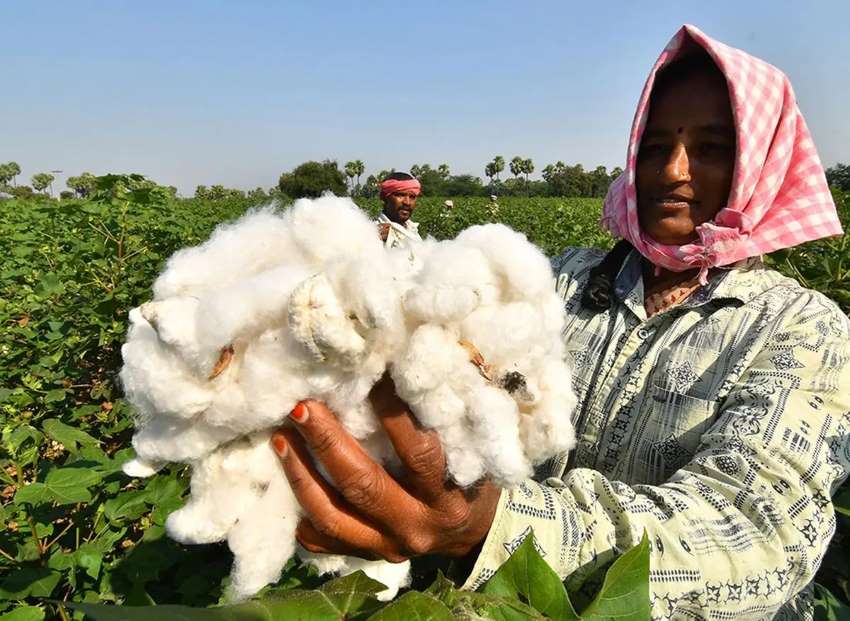
At a time of evolving trade policies and geopolitical uncertainties, Vietnam and India are looking to deepen their cooperation in the textile and garment sector, recognizing the significant mutual benefits that can be unlocked. A recent statement by Bùi Trung Thướng, Trade Counselor at the Vietnam Trade Office in India, highlighted the strategic imperative for both countries to strengthen their ties, particularly in light of the US's new reciprocal tax policy.
Complementary strengths, shared opportunities
Vietnam, a global garment export powerhouse with exports reaching an estimated $44 billion in 2024, is seeking to diversify its supply chains and reduce its reliance on China, which currently provides 65 per cent of its textile inputs. India, a leading raw materials supplier, especially cotton and yarn, and a country with a rich textile heritage, presents a compelling alternative.
"The synergy between Vietnam's manufacturing prowess and India's raw material abundance is undeniable," states Thướng. "By leveraging the ASEAN-India Free Trade Agreement (AIFTA), Vietnam can significantly reduce material costs, enhancing its competitiveness."
India's strengths extend beyond raw materials. It boasts of a diverse textile industry, encompassing natural fibers like cotton, jute, silk, and wool, as well as synthetic fibers such as polyester and nylon. Its capacity to produce a wide range of blended and technical textiles positions it as a vital partner for Vietnam.
Regional cooperation the way forward
The US' new reciprocal tariff poses a significant challenge to both Vietnam and India, potentially increasing export costs. This necessitates a shift towards regional cooperation and diversification into other FTA markets, including the EU, Japan, and South Korea.
To solidify this partnership, Thướng has proposed several initiatives: First proposal is the setting up of a $500 million ‘Joint Investment Fund’ to establish spinning mills in southern India and northern Vietnam, along with smart fabric research centers in Ho Chi Minh City and Bangalore. Another proposal is a bilateral preferential tax agreement reducing import-export costs and enhancing competitiveness. Thướng propose setting up of a ‘Vietnam-India Textile Innovation Fund’ supporting joint research on green technologies, technical textiles, and recycled materials. Vietnam can import shuttleless looms from India, which are 30-40 percent cheaper than European imports.
The ASEAN-India Free Trade Agreement (AIFTA), signed in 2009 and implemented in 2010, plays a crucial role in facilitating trade between the two nations. It has led to significant reductions in tariffs, boosting bilateral trade. The AIFTA has provisions that allows for preferential tariff rates on numerous goods, including many textile products. This directly assists in the reduction of costs, that Thuong spoke of.
Table: India-Vietnam textile import and export
|
Year (Jan-Nov) |
Category |
India exports to Vietnam |
India imports from Vietnam |
Notes |
|
2022 |
Total Textile Trade |
333.884 |
302.204 |
Overall trade volume. |
|
Yarn |
118.367 |
82.907 |
Increasing Indian yarn exports. |
|
|
Fabric |
77.928 |
106.976 |
Vietnam fabric export to India higher than India's to Vietnam. |
|
|
Fibre |
137.589 |
112.32 |
High volume of fiber trade. |
|
|
2023 |
Total Textile Trade |
327.282 |
247.306 |
Trade values fluctuated. |
|
Yarn |
151.578 |
74.298 |
Continued yarn export growth. |
|
|
Fabric |
71.198 |
75.865 |
Fabric trade remained relatively stable. |
|
|
Fibre |
104.505 |
97.143 |
Fiber trade remained high. |
|
|
2024 |
Total Textile Trade |
404.446 |
212.76 |
Indian textile export values are greater than import values. |
|
Yarn |
173.408 |
55.908 |
Strong growth in yarn exports. |
|
|
Fabric |
67.319 |
76.984 |
Fabric trade remained similar to the previous year. |
|
|
Fibre |
163.719 |
79.866 |
Increased fiber export from India. |
A strong partnership between Vietnam and India in the textile and garment sector holds immense potential. By diversifying supply chains, leveraging FTA benefits, and fostering innovation, both nations can navigate global trade challenges and secure a prosperous future. This collaboration represents a strategic move towards building resilient and mutually beneficial economic ties.












